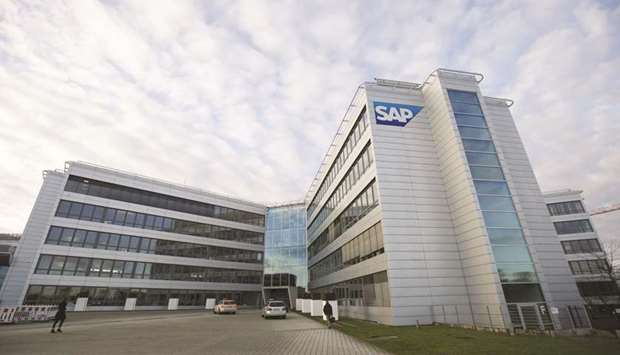Now it must show it can deliver. As the dominant provider of software that helps companies run back-office functions like finance and supply-chain management, SAP’s aim is to bundle other Customer Relationship Management (CRM) services like e-commerce, data analysis and sales customisation to win market share from rivals.
With its new focus, SAP, which is valued at $149bn, is throwing down the gauntlet to Salesforce, a CRM specialist that leads the market with its cloud-based offering, as well as to Oracle and Microsoft.
SAP wants to double its CRM business over the next two years, the company’s top salesman Alex Atzberger has told Reuters, promising more detailed forecasts when it announces quarterly results on Thursday. But, say analysts, SAP is late to the game and will have to work hard to make its new product — the C/4HANA suite — a truly joined-up experience for its customers. “Is it already a suite? I don’t think so,” said Frank Niemann, an analyst at PAC Germany, summing up his impressions of SAP’s Sapphire conference in Orlando, Florida where CEO Bill McDermott launched the product last month.
“This is a collection of products and technology. Over time they will have a suite, but this is a work in progress.”
McDermott told clients at the gathering that SAP was moving beyond sales automation to “a 360-degree view of the actual customer”.
The focus on CRM exposes SAP to the fastest growing segment of the $200bn enterprise software market.
It also enables the German firm to offer an ‘end-to-end’ proposition that draws on its strengths in areas like finance, logistics and human resources.
Gartner Research forecasts that the CRM market will grow at an annual rate of 13.5% to $82bn by 2022, double the pace of SAP’s mainstay Enterprise Resource Planning (ERP) segment that is forecast to reach $48bn by that time.
While analysts see SAP’s strategy as smart, they will be looking for more details on its execution.
“Bottom line: the facts have to come,” said Ilona Hansen at Gartner.
It’s common practice for software salesmen to throw ‘green bananas’ at their customers, promising that they will ripen in good time and SAP is no different, say industry sources, but it does have a track record of eventual delivery.
“The new suite for me right now is a marketing label,” said Jean-Claude Flury, chief information officer at Swiss life sciences firm Siegfried Holding AG.
“I wouldn’t take it at face value — but as a customer I would take it into my strategy,” added Flury, speaking in his capacity as a management board member at DSAG, a German-language SAP user group.
The challenges of integrating applications from different vendors are significant and if SAP can provide a joined-up set of solutions on a single platform, that will simplify the tasks of installing and maintaining them, IT managers say.
McDermott’s promise of an all-round view of the consumer is a strength of SAP, say analysts, based on its access to 1.3bn customer profiles acquired via the takeover last year of a company called Gigya. Gigya, now rebranded the SAP Customer Data Cloud, specialises in online login products.
It monitors and analyses people’s internet use, having gathered their prior consent to do so.
That kind of insight is light years ahead of the old approach of blasting email lists with poorly targeted sales messages.
It also offers a way for firms to avoid falling foul of Europe’s tough new privacy laws by delegating compliance to SAP.
“This syndicated approach, where people allow themselves to be available to multiple channels, has a lot of mileage,” said George Lawrie of Forrester Research. That, combined with the role of data in SAP’s product architecture, is a competitive advantage, he added.
“There isn’t a front office; there isn’t a back office — it’s one thing.
It’s all on a data hub,” said Lawrie. “It’s very smart and is kind of ahead of what the others are doing.”



